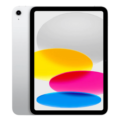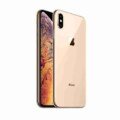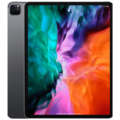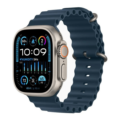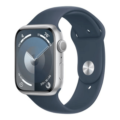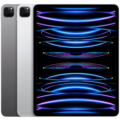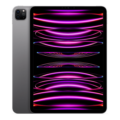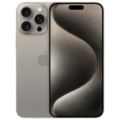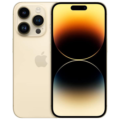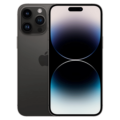- Home
- Apple Devices
- Apple iPad
- Apple iPad Air (2019) full specifications
Apple iPad Air (2019) full specifications
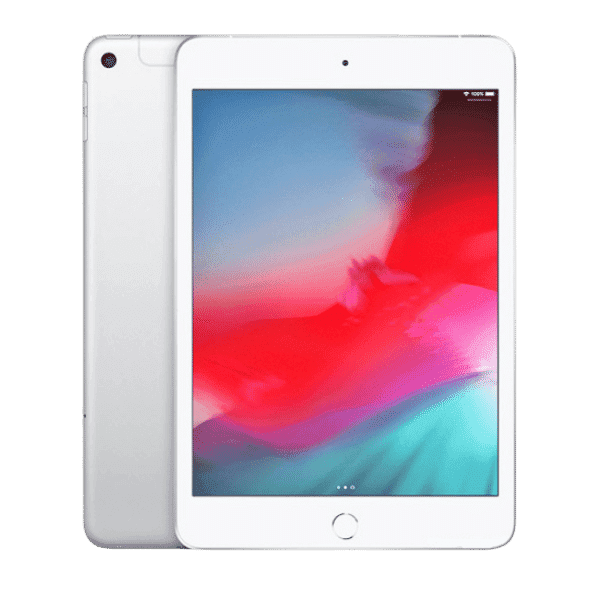
SPECIFICATIONS
General
| Status | Available |
| Announced |
2019, March 18 |
| Released | 18 March, 2025 |
| Model |
A2153, A2123, A2154, A2152, iPad11,3, iPad11,4 |
| Price Apple iPhone Price in USA, UK, Canada, Australia, India, Pakistan, China, Japan and Europe |
USD 601 EUR 550 |
Network
| Technology |
GSM / HSPA / LTE |
| 2G Network |
GSM 850 / 900 / 1800 / 1900 |
| 3G Network | HSDPA 850 / 900 / 1700(AWS) / 1900 / 2100 |
| 4G Network |
1, 2, 3, 4, 5, 7, 8, 11, 12, 13, 14, 17, 18, 19, 20, 21, 25, 26, 29, 30, 34, 38, 39, 40, 41, 46, 66, 71 - A2153 1, 2, 3, 4, 5, 7, 8, 11, 12, 13, 14, 17, 18, 19, 20, 21, 25, 26, 28, 29, 30, 34, 38, 39, 40, 41, 46, 66 - A2123 |
| Speed | HSPA 42.2/5.76 Mbps, LTE-A (CA) Cat16 1024/150 Mbps |
| GPRS GPRS (General Packet Radio Service) is a packet oriented mobile data service on the 2G and 3G cellular communication system's global system for mobile communications (GSM), Generally, GPRS is used for the purpose of wireless data transfer, such as sharing pictures and videos or browsing the Internet via a mobile phone connection. | |
| EDGE EDGE (Enhanced Data GSM Environment) is a wireless network technology generally considered the next step in the 2G network offers data transfer rates up to four times faster than ordinary GSM networks, Generally, EDGE is used for the purpose of wireless data transfer, such as sharing pictures and videos or browsing the Internet via a mobile phone connection. |
Body
| Dimensions | 250.6 x 174.1 x 6.1 mm (9.87 x 6.85 x 0.24 in) |
| Weight | 456 g (Wi-Fi) / 464 g (3G/LTE) (1.01 lb) |
| Colors |
Space Gray, Silver, Gold |
| SIM SIM (Subscriber Identity Module) is a small card that contains mobile network subscriber's account information. This allows the phone using the card to attach to a mobile network. The SIM card is most commonly associated with GSM and UMTS mobile networks. Moving a SIM card from one phone to another allows a subscriber to switch mobile phones without having to contact their mobile network carrier. SIM cards can also be used by a phone to store limited amounts of data, such as phone numbers and text messages. |
Nano-SIM and eSIM |
| Build | Glass front, aluminum back, aluminum frame |
Display
| Display Type Display Technology => A number of display technologies and types used in mobile phones => TFT (Thin Film Transistor), IPS (In-Place Switching), OLED (Organic Light Emitting Diode), AMOLED (Active-Matrix Organic Light-Emitting Diode), Super AMOLED (an even advanced version of AMOLED), Resistive Touchscreen (Resistive touchscreens contain two layer of conductive material with a very small gap between them which acts as a resistance), Capacitive Touchsceen (Capacitive touchscreen technology consists of a layer of glass coated with a transparent conductor) | IPS LCD |
| Size | 10.5 inches, 341.4 cm2 (~78.3% screen-to-body ratio) |
| Resolution | 1668 x 2224 pixels, 4:3 ratio |
| Pixel Density Pixel Density (PPI) is refers to the concentration of pixels on a particular display, measured in pixels per inch (ppi). Pixel density is calculated by dividing the diagonal pixel resolution of a display by its diagonal size, higher pixel density better display quality. | (~265 ppi density) |
| Touch Screen | Haptic Touch |
| Display Protection Display Protection => Gorilla Glass is a special alkali-aluminosilicate glass shield with exceptional damage resistance that helps protect mobile displays from scratches, drops, and bumps of everyday use, It is always better to go for a smartphone with Gorilla Glass for that added protection and peace of mind. | Scratch-resistant glass, oleophobic coating |
| Multitouch | |
| Features |
True-tone |
Camera
| Primary Camera is able to capture photographs and usually videos, The most important characteristics of a camera are the resolution (measured in megapixels), lens focus type (fixed or automatic), higher megapixel cameras are known to capture higher quality photos, but not always a good measurement of the photos quality. |
8 MP, f/2.4, 31mm (standard), 1.12µm, AF |
| Video | 1080p@30fps |
| Camera Features | HDR |
| Selfie Camera |
7 MP, f/2.2, 31mm (standard) |
| Video | 1080p@30fps |
| Camera Features | HDR |
Hardware
| Chipset Chipset is a group of integrated circuits designed to perform one or a more dedicated functions, often with real time computing constraints, Popular smartphones are equipped with more advanced embedded chipsets that can do many different tasks depending on their programming. | Apple A12 Bionic (7 nm) |
| CPU CPU (Central Processing Unit) mostly known as processors, CPU processes instructions in order to carry out certain functions that make your device operate properly. Processors are often described as the brain of computers, smartphones and tablets, Smartphones and tablets rely on processors to carry out their every task, Processors are an incredibly important factor in selecting any type of computing device, including your smartphone. | Hexa-core (2x2.5 GHz Vortex + 4x1.6 GHz Tempest) |
| GPU GPU (Graphics Processing Unit) is a single-chip processor designed to rapidly manipulate and alter memory to accelerate the creation of images in a frame buffer intended for output to a display, This includes things such as lighting effects, object transformations, and 3D motion. | Apple GPU (4-core graphics) |
| RAM (Memory) RAM (Random Access Memory) is a type of computer memory that can be accessed randomly, any byte of memory can be accessed without touching the preceding bytes that allows information to be stored and accessed quickly from random locations. RAM is the most common type of memory found in computer systems, smartphones, tablets and other electronic devices. | 3 GB |
| Internal Storage Internal Storage is a data storage space (flash memory) mostly used in smartphones, tablets and other electronic devices where operating system, apps, music, photos, videos, files and other user data Is stored. | 64GB/256GB |
| Card Slot Memory Card Slot is a special slot for inserting a memory card. Memory cards allow you to expand the phone's built-in memory, A memory card (sometimes called a flash memory card or a storage card) is a small storage medium used to store data such as text, pictures, audio, and video, for use on small, portable or remote computing devices such as mobile phones, mp3 players, digital cameras. | No |
| Sensors Sensors are electronic components that detects and responds to some type of input from the physical environment. The specific input could be light, heat, motion, moisture, pressure and location, The output is generally a signal that is converted to use in computing systems, a location sensor, such as a GPS receiver is able to detect current location of your electronic device. |
Fingerprint (front-mounted), gyro, compass, barometer, accelerometer |
Software
| Operating System OS => Every computer system run on a base software called Operating System (OS). Operating System controls all basic operations of the computer (such as smartphone, PDAs, tablet computers and other handheld devices). The Operating System allows the user to install and run third party applications (apps), apps are used to add new functionality to the device. | iOS 12.1.3, upgradable to iPadOS 17.4 |
| Browser (Default) | Safari |
Media
| Loudspeaker | Yes, with stereo speakers |
| 3.5mm Jack | |
| FM Radio | No |
Connectivity
| Bluetooth Bluetooth is a wireless communications technology for exchanging data between mobile phones, headsets, computers and other network devices over short distances without wires, Bluetooth technology was primarily designed to support simple wireless networking of personal consumer devices. | 5.0, A2DP, EDR |
| Infrared Infrared connectivity is an old wireless technology used to connect two electronic devices. It uses a beam of infrared light to transmit information and so requires direct line of sight and operates only at close range. | |
| Wi-fi Wi-Fi is a popular wireless networking technology using radio waves to provide high-speed network connections that allows devices to communicate without cords or cables, Wi-Fi is increasingly becoming the preferred mode of internet connectivity all over the world. | 802.11 a/b/g/n, dual-band |
| Wi-fi Hotspot | |
| USB | Lightning, USB 2.0 |
| GPS GPS The Global Positioning System is a satellite-based radio navigation system, GPS permits users to determine their position, velocity and the time 24 hours a day, in all weather, anywhere in the world, In order to locate your position, your device or GPS receiver must have a clear view of the sky. | GPS, GLONASS (Wi‑Fi + Cellular model only) |
| NFC NFC (Near field communication) is a set of standards for smartphones and similar devices to establish peer-to-peer radio communications with each other by touching them together or bringing them into proximity, usually no more than a few inches. |
Battery
| Battery Type Battery Type => Cell phones run on various kinds of batteries depending on the manufacturer, phone size or shape and features. There are basically four types of cell phone batteries => Lithium Polymer, Lithium Ion, Nickel Metal Hydride and Nickel Cadmium. | Li-Po |
| Capacity Battery Capacity is a measure (typically in Amp-hr) of the charge stored by the battery, and is determined by the mass of active material contained in the battery. The battery capacity represents the maximum amount of energy that can be extracted from the battery under certain conditions. | 8134 mAh (30.8 Wh) |
| Placement | Non-removable |
| Talk Time Talk Time is the longest time that a single battery charge will last when you are constantly talking on the phone under perfect conditions, Ambient temperature and highly dependent on the cellular network environment such as the distance to the closest cell network tower. | Up to 10 h (multimedia) |
MISC
Description
The iPad Air (3rd Generation), released in March 2019, is an excellent tablet that brings together a powerful set of features in a sleek design. It’s perfect for users who are looking for high-end performance without spending as much on the iPad Pro models.
The iPad Air 3 strikes the right balance between performance, price, and portability, making it a great choice for many users. In this full review, we’ll break down the iPad Air (2019) from its design and display to performance, cameras, battery life, and overall value.
Table of Contents
Design and Display

The iPad Air (3rd Generation) maintains a sleek and lightweight design, measuring 250.6 x 174.1 x 6.1 mm and weighing 456 grams (Wi-Fi model) or 464 grams (Wi-Fi + Cellular model).
The 10.5-inch Retina display offers a resolution of 2224 x 1668 pixels and a pixel density of 264 ppi, delivering clear and vibrant visuals. With 500 nits of brightness, the display remains clear even in bright environments.
The inclusion of True Tone technology adjusts the screen’s color temperature based on background lighting, providing a more natural viewing experience and reducing eyestrain during extended use.
Performance and Software

The iPad Air (3rd Generation) is powered by the A12 Bionic chip with a 64-bit architecture. This processor includes a 6-core CPU and a 4-core GPU, delivering a substantial boost in performance compared to previous models.
The A12 Bionic chip ensures smooth multitasking, quick app launches, and the ability to handle demanding applications and games with ease.
Additionally, the iPad Air (3rd Generation) supports Apple’s Neural Engine, which enhances machine learning capabilities for tasks such as image recognition and increased reality. This results in improved performance for apps that leverage these technologies, making the iPad Air a versatile tool for both productivity and entertainment.
Software and Features
The iPad Air (3rd Generation) runs an iPad OS, Apple’s operating system specifically designed for iPads. iPad OS introduces features such as multitasking, Split View, and Slide Over, which allow users to work with multiple apps simultaneously and improve overall productivity.
The iPad Air (3rd Generation) also supports the first-generation Apple Pencil, providing enhanced capabilities for drawing, note-taking, and other creative tasks.
The device also includes support for the Smart Keyboard, making it a viable option for users who need a portable keyboard for typing and productivity on the go. This adds to the tablet’s versatility, positioning it as an excellent choice for students, professionals, and casual users alike.
Camera and Photography

The camera system on the iPad Air (3rd Generation) provides functional capabilities for everyday use.
Rear Camera: 8MP, f/2.4 aperture, 1080p video recording
Front Camera: 7 MP, 1080p FaceTime HD camera
The rear camera, with an 8MP sensor and f/2.4 aperture, captures clear photos and records 1080p HD video. The 7MP front-facing camera supports 1080p FaceTime HD video calls, providing sharp and clear images for video chatting.
Battery Life
The iPad Air (3rd Generation) packs an 8134mAh Li-Po battery, which Apple claims can last up to 10 hours of multimedia use. This means you can browse the web, watch videos, or work on documents for an entire day without worrying about charging. The efficient A12 Bionic chip also helps optimize battery usage, ensuring that the device lasts longer despite its power.
For users who need a tablet for work or school, this impressive battery life makes the iPad Air 3 a reliable companion throughout the day.
Price and Value for Money
The iPad Air (3rd Generation) starts at approximately €550 for the 64GB Wi-Fi model. For the performance, display quality, and battery life it offers, this is a reasonable price for those looking for a mid-range tablet. The 256GB model costs more but offers extra storage for users who need more space.
Given its power, the iPad Air (2019) offers great value for money. It’s perfect for users who want a tablet that handles professional tasks like video editing, photo manipulation, and multitasking but without the hefty price tag of the iPad Pro.
Conclusion
The iPad Air (3rd Generation) offers an excellent combination of performance, battery life, and design at a mid-range price. It’s a great choice for students, professionals, or anyone looking for a reliable tablet that can handle everything from web browsing to creative work.
While it doesn’t have all the features of the iPad Pro, the iPad Air 3 is a fantastic option for those who don’t need the bleeding-edge specifications but still want a premium experience.
